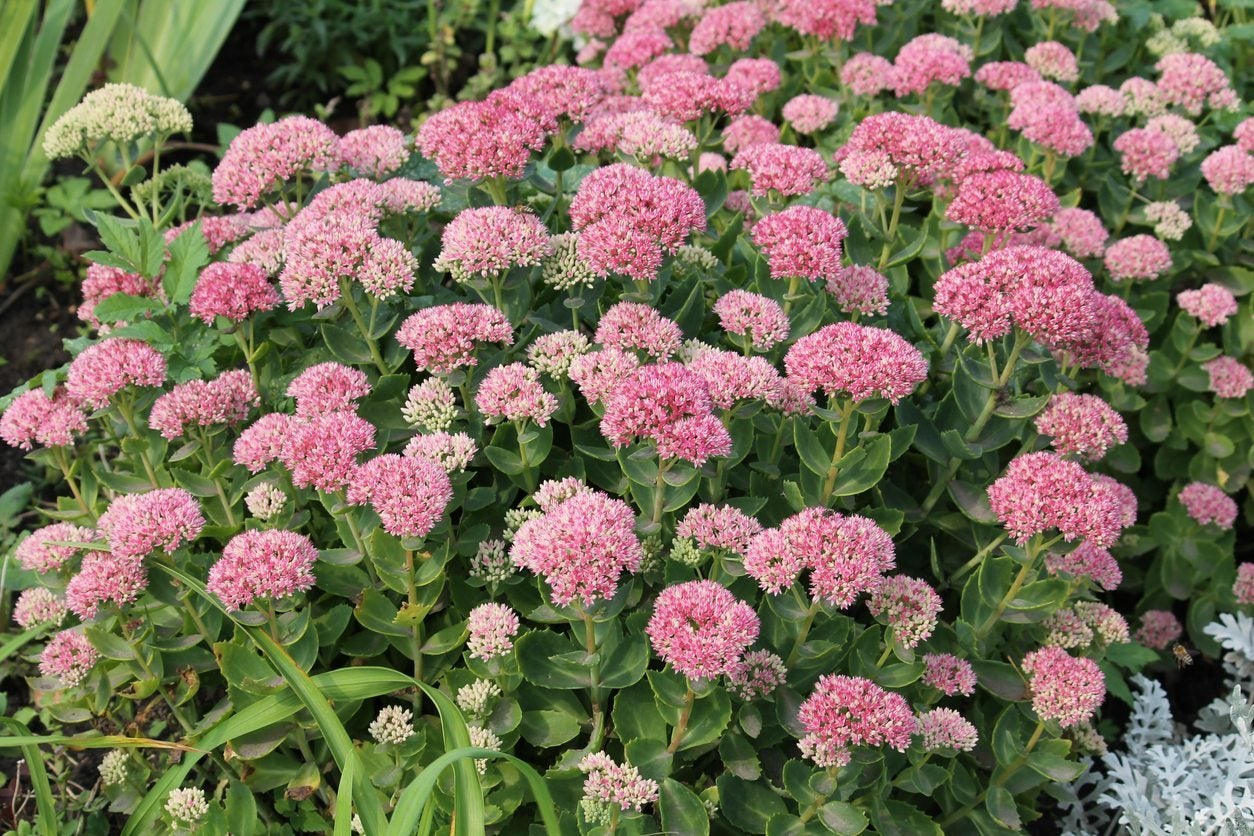Meteor Stonecrop Care: Tips For Growing Meteor Sedums In The Garden


Also known as showy stonecrop or Hylotelephium, Sedum spectabile ‘Meteor’ is an herbaceous perennial that displays fleshy, grayish-green foliage and flat clumps of long-lasting, star-shaped flowers. Meteor sedums are a cinch to grow in USDA plant hardiness zones 3 through 10. The tiny, deep pink flowers appear in late summer and last well into fall. The dry flowers are nice to look throughout the winter, especially when coated with a layer of frost. Meteor sedum plants look great in containers, beds, borders, mass plantings, or rock gardens. Interested in learning how to grow Meteor stonecrop? Read on for helpful tips!
Growing Meteor Sedums
Like other sedum plants, Meteor sedums are easy to propagate by taking stem cuttings in early summer. Just stick the stems in a container filled with well-drained potting mix. Place the pot in bright, indirect light and keep the potting mix lightly moist. You can also root leaves during the summer. Plant Meteor sedums in well-drained sandy or gravelly soil. Meteor plants prefer average to low fertility and tend to flop over in rich soil. Also locate Meteor sedums where the plants will receive full sunlight for a least five hours per day, as too much shade can result in a long, leggy plant. On the other hand, the plant benefits from afternoon shade in extremely hot climates.
Meteor Sedum Plant Care
Meteor stonecrop flowers don’t require deadheading because the plants only bloom once. Leave the blooms in place during the winter, then cut them back in early spring. The blooms are attractive even when they’re dry. Meteor stonecrop is moderately drought tolerant but should be watered occasionally during hot, dry weather. The plants rarely need fertilizer, but if growth seems slow, feed the plant a light application of general purpose fertilizer before new growth appears in late winter or early spring. Watch for scale and mealybugs. Both are easily controlled with insecticidal soap spray. Treat any slugs and snails with slug bait (non-toxic products are available). You can also try beer traps or other homemade solutions. Sedums should be divided every three or four years, or when the center begins to die out or the plant outgrows its boundaries.
Gardening tips, videos, info and more delivered right to your inbox!
Sign up for the Gardening Know How newsletter today and receive a free copy of our e-book "How to Grow Delicious Tomatoes".

A Credentialed Garden Writer, Mary H. Dyer was with Gardening Know How in the very beginning, publishing articles as early as 2007.
-
 My Homemade Orchid Fertilizer Always Brings More Blooms – Here's The Easy Recipe That Transforms Plants
My Homemade Orchid Fertilizer Always Brings More Blooms – Here's The Easy Recipe That Transforms PlantsScientist-turned-gardener Mary Ellen Ellis shares her tried-and-tested DIY orchid fertilizer recipe, plus more ingredients to try for healthy, happy plants.
By Mary Ellen Ellis
-
 Looking For Plants To Give You The Soft And Fuzzies? Try These 5 Fuzzy Leaf Plant Options
Looking For Plants To Give You The Soft And Fuzzies? Try These 5 Fuzzy Leaf Plant OptionsLovers of texture, drama, silver foliage and tactile plants will adore these special sensory garden additions. These fuzzy leaf plant options will leave you all aglow
By Susan Albert